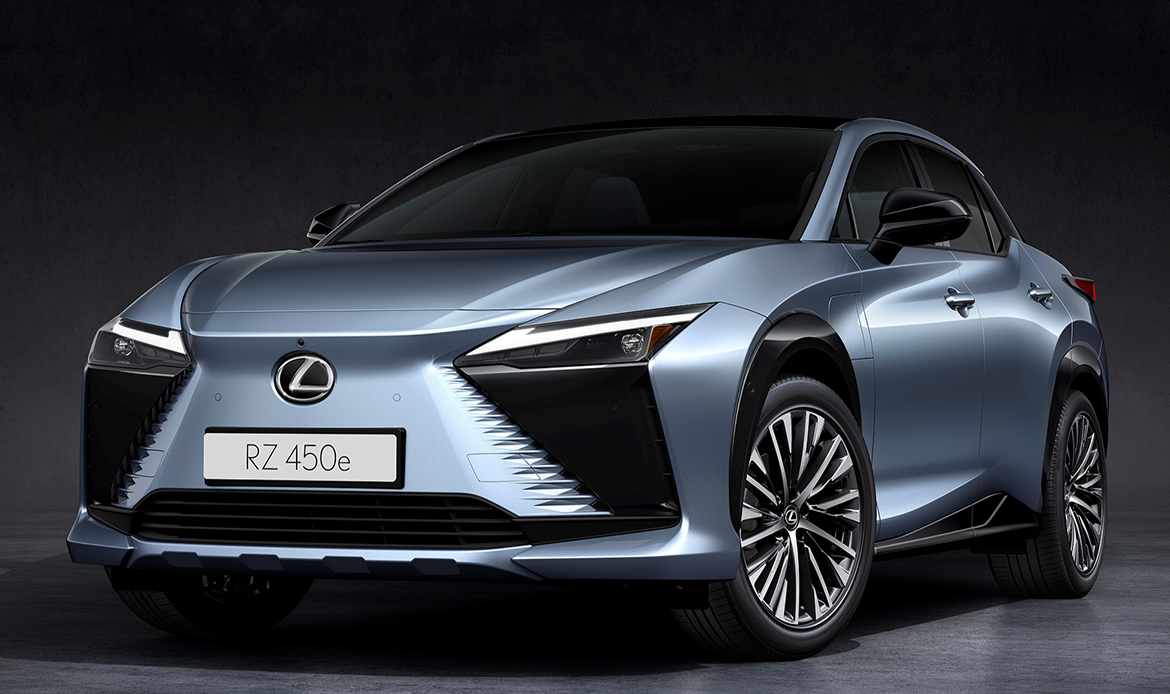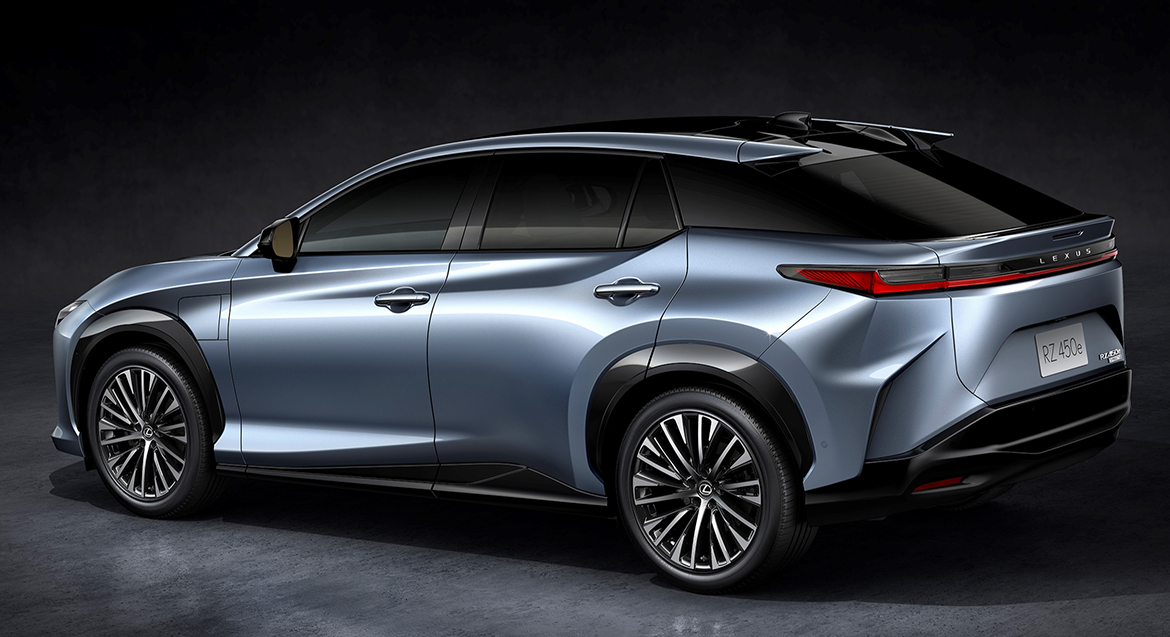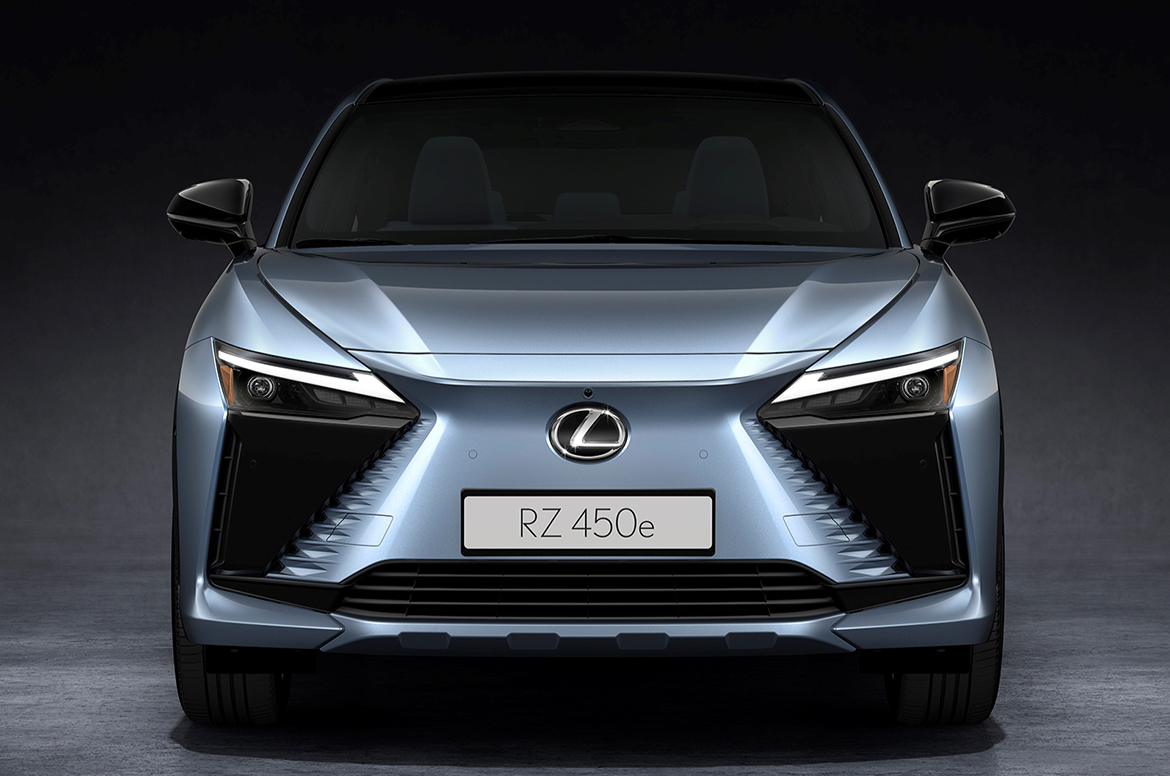Lexus presents the Rz, the first 100% electric SUV built on Toyota’s eTnga platform, the same one used by its cousins Toyota bZ4X and Subaru Solterra. Lexus has taken the opportunity of this new model to create a vehicle that inaugurates a new styling season, derived directly from the LF-Z Electrified concept car presented in 2021. The design concept is “seamless E-motion,” and it expresses the powerful character of an electric vehicle, namely responsiveness and seamless acceleration. The result is a new and simple form that captures the spirit of technological evolution, function and performance.
The front design clearly shows the electric nature of the Rz. With no internal combustion engine, the hood has been lowered and the frontal openings have been reduced. The hourglass grille has been a defining feature of Lexus models for the past decade, and with the Rz this detail has been evolved and extended to the body. The effect is accentuated by a new optional two-tone body finish that extends the contrasting black area from the roof to the hood.
The light clusters are unified with the hourglass body. The car’s character is also expressed in the design of the rear end, with a fresh, high-tech appearance. The rear roof spoiler contributes to the stability of the car, while the light line that runs across the width of the car has become a distinctive feature of Lexus design. Here it has an edgy, minimalist look with the top and bottom made as thin as possible to give the impression of simplicity and precision.
The Rz’s cockpit was designed following the Tazuna concept, and combines the driver’s position at the steering wheel and the careful arrangement of gauges, controls and displays to create a space where only small hand and eye movements are needed to operate the vehicle and its functions. The principle is inspired by the small adjustments of the reins that a rider uses to control a horse, or the meaning of “Tazuna” in Japanese. The layout of the gauges, head-up display and 14-inch multimedia display has been optimized and the instrument panel has been lowered, further improving the driver’s front view. Designers also interpreted performance in a clean, minimalist design with fewer elements and ornaments, while using high-quality materials. The center console features a new indicator for the shift-by-wire system, reflecting the overall simplicity of the design.
The light clusters are unified with the hourglass body. The car’s character is also expressed in the design of the rear end, with a fresh, high-tech appearance. The rear roof spoiler contributes to the stability of the car, while the light line that runs across the width of the car has become a distinctive feature of Lexus design. Here it has an edgy, minimalist look with the top and bottom made as thin as possible to give the impression of simplicity and precision.














